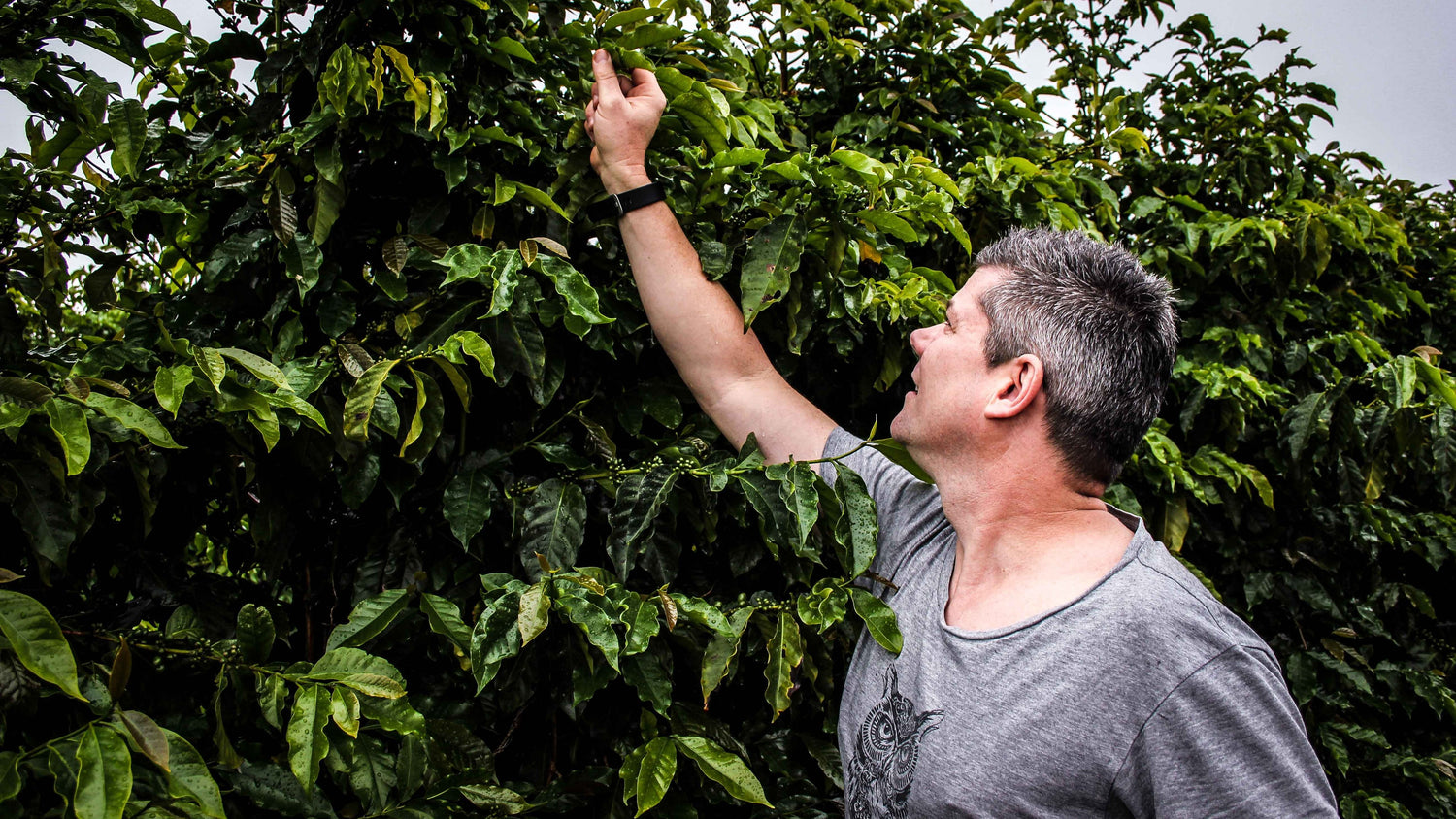Our Origin Trip to Daterra Estate, Brazil Pt 1
Late last November the Climpson’s got to play tour guide to three of our lovely customers for a quick and action-packed trip to Minas Gerais via Sao Paulo, Brazil. Five out of six of us had never visited a farm before, so anticipation was high. Ian Burgess, our Founding Director has been selling coffees from there for 15 years and we were all armed with our curiosity and cameras. This was less of a buying trip and more of an opportunity to round out our knowledge.
We were mainly going to Daterra as we have worked with them for the longest and have used more of their coffee than any other farm; we also have our own dedicated lots that we have been tweaking over the past seven years. We visited three farms in total and experienced many unexpected bonus lessons along the way. The Cerrado (“Savannah”) region is concentrated with coffee production and it's so vast we drove a total of seven hours and took two flights to traverse just a part of it. It’s high altitude with a desert climate, perfect for growing coffee!
We flew into Uberlandia where we were greeted by Juliana and Fernanda, the marketeers for Daterra. The scenery of the “bread basket” of Brazil is breathtaking; undulating mountains and hills, rich red soil, patches of forest and crops as far as the eye can see. Two hours later we arrived at Daterra Estate. Daterra means “from the earth” and was conceived in the 80s after previously starting as a cattle and avocado venture. They planned to produce speciality coffee, grounded by environmental preservation & social development. Repairing the ecosystem and land was a priority and the dedication to the environment is a constant theme. Additionally, they only sell to sustainably certified importers.

Joao, head agronomist, led us around the 5000 hectares of 216 mini-farms, divided into the larger Taboues and 1500 hectare Boa Vista. A coffee trees’ journey starts in the nursery, progressing to the acclimatization area before planting in the ground. There are a lot of interesting cultivars being produced, for example Bourbon LCJ10 (0.6% caffeine compared to 1.4%. “LC” = Low Caffeine), Topazio (delicious apple acidity), and IAC - hybrid of Villa Sarchi and Catimor. More familiar were Typica, Bourbon, Mondo Novo , Icatu Vermelho, Amarelo and Catuai.

The coffee yield per hectare is 40 x 60 kg bags (average) depending on the age of the trees, irrigation etc. Farm management is built around the plant life cycle; two years until first crop, highest yield at five years. At 12 years there is virtually no yield, however prune them back and they come back to life for a few more years of lower yield. On average production is around 85,000 x 60 kg bags per year. If you work back from that, you realize a lot of the farm isn’t coffee trees (in fact by law there must be 20% minimum allocated to nature reserve). Daterra are way above this and live in harmony with the land, the local water table etc. There are fascinating creatures roaming the farm at night apparently, including a legendarily massive anteater (known as a Tamandua-Bandeira).
Even with 200 permanent workers and 100 seasonal (picking) staff, everyone knows everyone in the business and they really look after their workers. Pay rates aside, there are cooked meals provided all day everyday, regular social gatherings and great free health care. You can feel the love in the business, and the passion for the product and for pushing it forward together. We were there outside of the hectic harvest season but everyone was still super busy. There's replanting, pruning and loads of maintenance to do.





